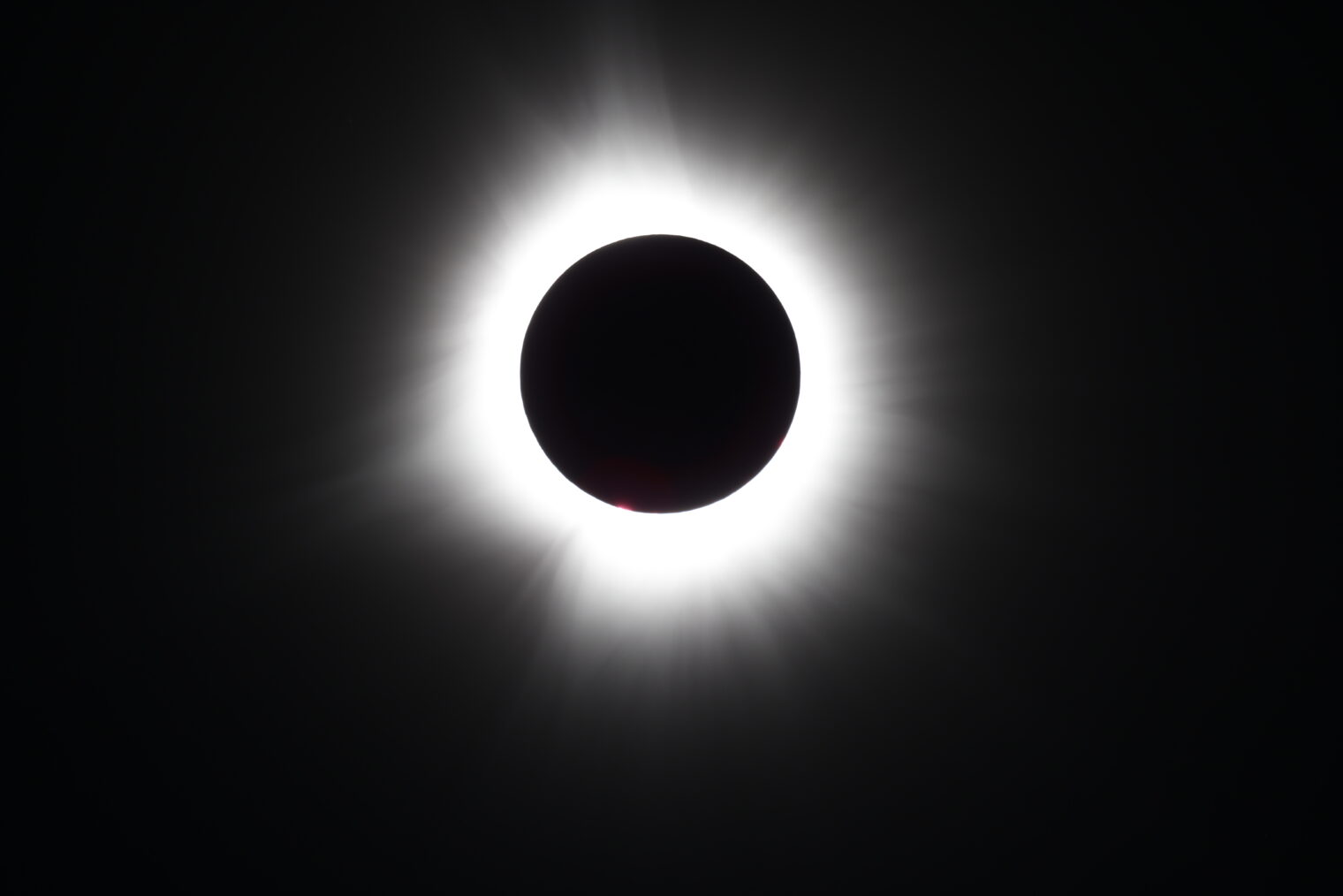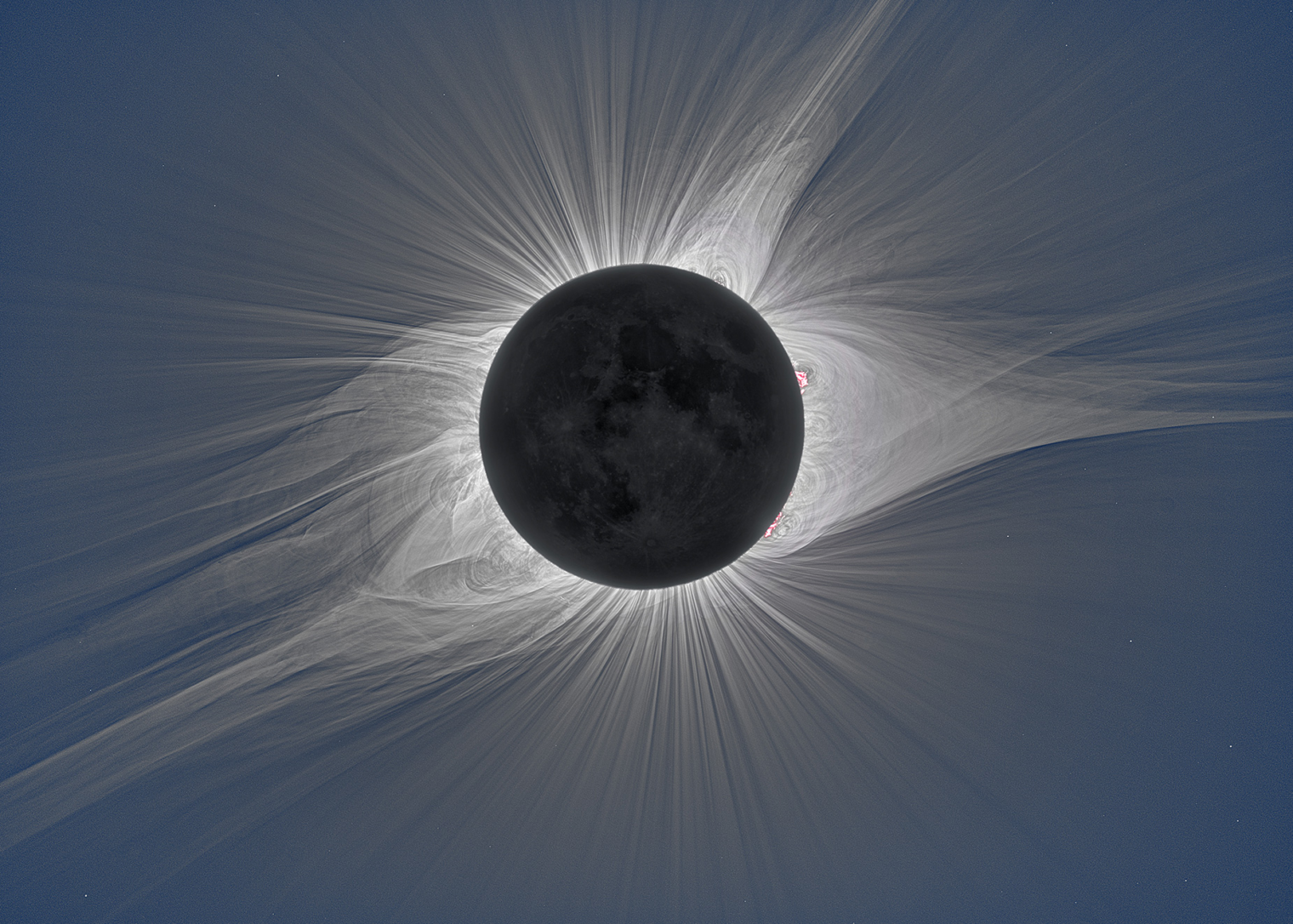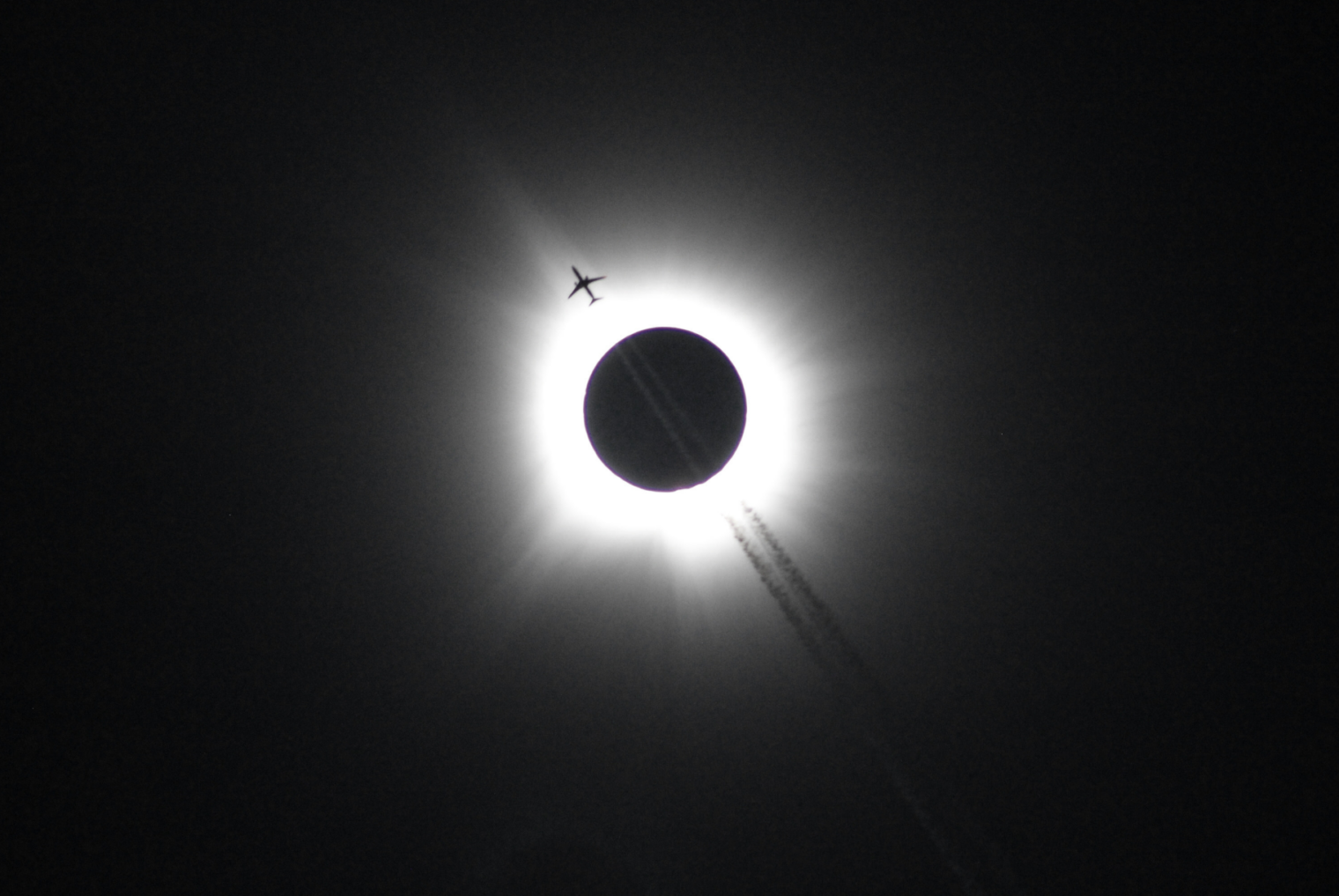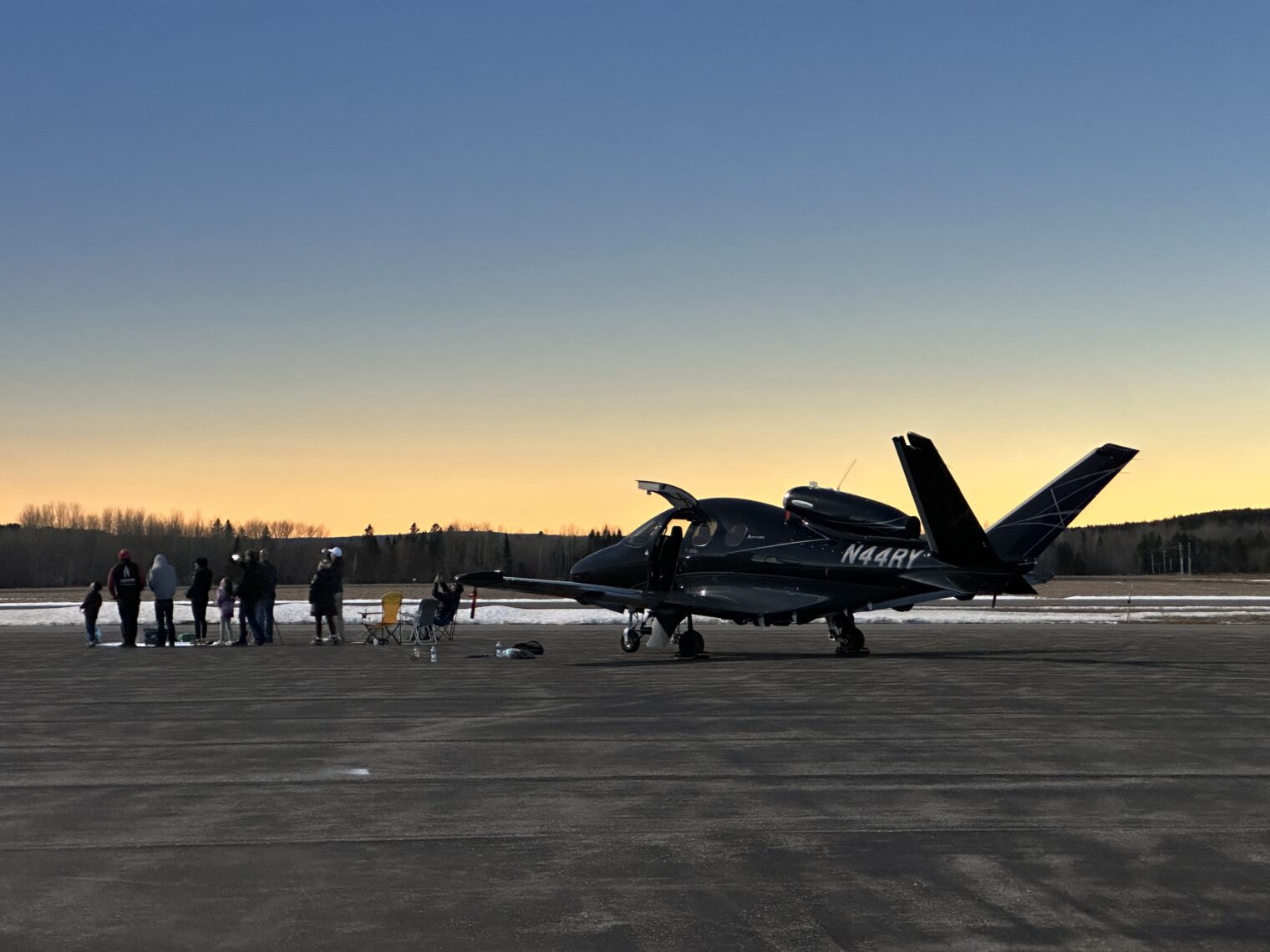The Canon mirrorless 800/11 lens is light enough to pack for Eclipse 2026 in Spain (or Iceland if you feel extremely lucky with the weather).
How well does it work for photographing totality? The magnification seems about right for photographing the full corona. Here is the entire JPEG out of the camera at 1/250th of a second and ISO 400 (no need to spec the aperture because it is always f/11):
With an exposure of 1/13 of a second, the corona gets quite a bit larger:
The camera was set to autofocus and fixed at ISO 400. It was mounted on a cheap light Slik ballhead tripod that I happened to have available in Boston (we flew from KBED to KHUL (Houlton, Maine, the last stop in the U.S. for Eclipse 2024) and these pictures were taken from the ramp at KHUL).
It’s tough enough to aim at 800mm and I certainly wouldn’t want any higher magnification without a star-tracker camera mount.
I’m generally negative on trying to photograph the eclipse. The great images are nearly all stitched together laboriously in Photoshop based on multiple exposures, e.g., one long enough to capture some details in the moon itself and the farthest reaches of the corona and some short enough to show detail in the corona right near the surface of the sun. It’s better to leave the documenting to the nerds with infinite Photoshop patience and bulky equipment and park yourself with a great pair of binoculars to simply enjoy the show.
Here’s a Photoshop special from NASA in 2017 that looks great but bears almost no resemblance to what you can see with your eyes or with a camera in a single image:
Here’s the ultimate example of the “f/8 and be there” principle of photography (an experienced photographer’s technical-sounding advice to a beginner):
Kendall Rust (Facebook post) says she took it in Jonesboro, Arkansas and that this is straight out of the Canon camera, though it looks like a Photoshop wizard created it! CNN shows a remarkably similar image and credits it to Bobby Goddin:
Here’s yet another:
Unless you’re Kendall Rust, Jack Emshwiller, or Bobby Goddin, though, I’m going to stick with the “just enjoy totality” advice and take some images of things that happen around you just before and after totality. (What if you are Kendall Rust, Jack Emshwiller, or Bobby Goddin? My advice is that you abandon your hatred of government-created inequality and load up on Powerball tickets the next time the jackpot reaches $1 billion!) Here’s a quick iPhone picture of the pseudo sunset:
But if you’re going to ignore my advice, the Canon 800/11 seems like a great choice! It’s cheap, light, and does the job pretty well.
Related:
- Eclipse-viewing lessons (from 2017)







The lion kingdom’s army of mirrored cameras are doomed to not have any more lenses. For 2017, it was an APS-C sensor + 200mm. APS-C sensor + 2x teleconverter + 200mm might be the next trick if there is a 2nd time. The corona was definitely larger in real life than any camera has captured.
Which corona do you prefer? The beer, the virus or the blocked sun?
TS: I am not manly enough to drink beer, so definitely not the beer from our south-of-the-border brothers, sisters, and binary-resisters. The virus was very powerful in terms of illuminating what elites will do to peasants if given a chance. However, since I love Science as only a non-scientist can, I am going to rate the solar surface #1 among these three!
Everything under the sun is in tune
But the sun is eclipsed by the mooooon
A bit late to the party.
Why not RF600/11? With R5 there still will be enough details, but definitely easier to aim.
Did you use any foil film to reduce light amount to protect lens and sensor (and eyes)?